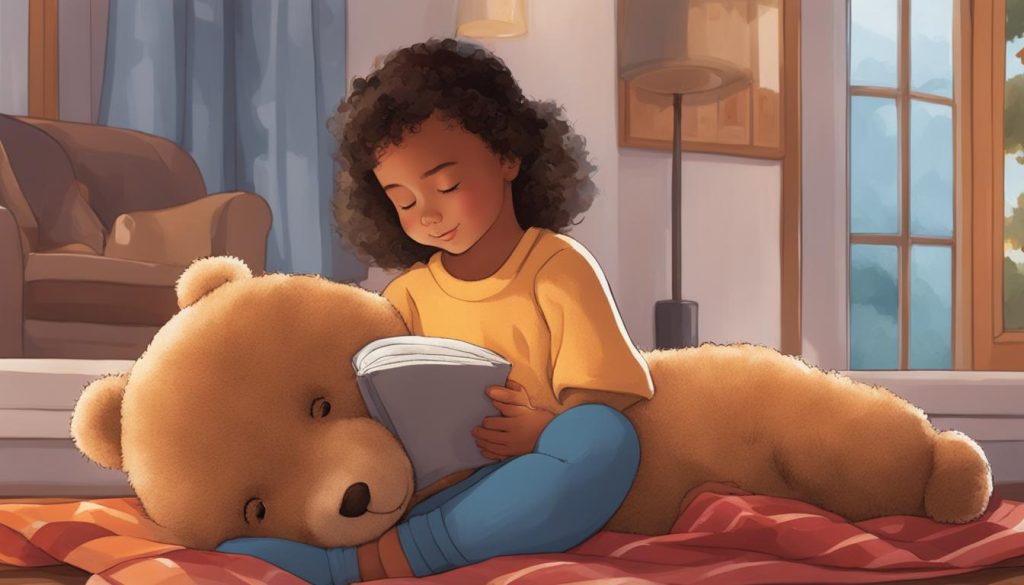Stuffed animals can bring joy and comfort to children, but they can also harbor germs, dust, and allergens. That’s why it’s essential to keep them clean and fresh. In this article, I will share the best practices for cleaning stuffed animals and ensuring their longevity.
When it comes to cleaning stuffed animals, regularity is key. If your child sleeps with or carries around their favorite plush friend frequently, it’s recommended to clean them once a week. Additionally, if your child has been sick or had lice, it’s crucial to disinfect and clean the toys right away.
Before cleaning any stuffed animal, always check the care instructions on the label. Some toys should not be machine-washed, especially those with plastic pellets instead of cotton batting. In such cases, it’s best to air-dry the stuffed animals to prevent damage to glue or plastic parts.
If hand-washing is necessary, use cool water and mild detergent. Spot-clean any stains and rinse off soap residue thoroughly. To remove stubborn stains, mix water and mild detergent, gently scrub the spot, and rinse. For plush toys with batteries or electronic parts, take extra care by covering the electrical areas with tape before spot-cleaning with a damp, soapy cloth.
If you have stuffed animals that cannot be washed, consider alternative cleaning methods. You can disinfect them by placing them in a plastic bag and freezing them overnight. This cold temperature will kill germs and bacteria. Another option is to vacuum the toys to remove dust and dirt.
By following these best practices, including regular washing, proper storage, and spot-cleaning, you can keep your child’s stuffed animals clean and fresh for longer, ensuring their continued enjoyment and safety.
The Benefits of Weighted Stuffed Animals for Children with Sensory Needs
Weighted stuffed animals have become increasingly popular for their therapeutic benefits, especially for children with sensory needs. These specially designed toys provide deep pressure stimulation, which can promote relaxation and a sense of security. The added weight helps to calm anxiety and improve focus, making them particularly beneficial for children with autism or anxiety.
One of the key advantages of weighted stuffed animals is their ability to promote sensory integration and regulation. The gentle pressure from the added weight can help soothe and comfort children with sensory processing difficulties. By providing a calming and comforting experience, these toys can support children in managing sensory overstimulation and achieving a more balanced state.
When choosing a weighted stuffed animal for a child with sensory needs, it’s important to consider their specific preferences and requirements. Different animals and textures may have varying effects, so finding the right match is crucial. Some children may prefer soft and plush fur, while others may find ribbons or tags more engaging. Additionally, it’s essential to select a weighted stuffed animal that is appropriate for the child’s age and developmental stage to ensure their safety and comfort.
| Therapeutic Benefits of Weighted Stuffed Animals for Children with Sensory Needs | Keywords |
|---|---|
| Promotes relaxation and a sense of security | relaxation, sense of security |
| Calms anxiety and improves focus | calms anxiety, improves focus |
| Aids in sensory integration and regulation | sensory integration, regulation |
| Supports children with sensory processing difficulties | sensory processing difficulties |
| Contributes to a more balanced state | balanced state |
Weighted stuffed animals offer a unique and beneficial sensory experience for children with sensory needs. Their ability to provide deep pressure stimulation, promote relaxation, and aid in sensory integration makes them a valuable tool for supporting children’s well-being and development.
Types and Features of Weighted Stuffed Animal Toys
Weighted stuffed animals come in various types and feature unique characteristics that make them appealing to children with sensory needs. These toys are designed to provide deep pressure stimulation, promoting relaxation and a sense of security. Here are some common types and features to consider when choosing a weighted stuffed animal for your child:
Bear-shaped Weighted Stuffed Animals
Bears are a popular choice for weighted stuffed animals. They often have soft and plush fur, making them comforting to touch and hold. The weight is evenly distributed throughout the toy, providing a gentle pressure that can help calm anxiety and improve focus.
Bunny-shaped Weighted Stuffed Animals
Bunnies are another popular type of weighted stuffed animal. They are often designed with sensory features such as ribbons, tags, or textured surfaces. These additional elements can provide sensory input, promoting sensory integration and regulation.
Other Animal-shaped Weighted Stuffed Animals
Weighted stuffed animals also come in various other animal shapes, such as dogs, cats, or dinosaurs. These toys offer a wide range of options to suit your child’s interests and preferences. They often have embroidered eyes and soft, cuddly fur, creating a comforting and soothing experience.
When selecting a weighted stuffed animal, consider factors such as the weight, size, and texture that would be most beneficial for your child. Each child’s sensory needs and preferences may vary, so it’s essential to choose a toy that suits their individual requirements.
Table: Comparing Types and Features of Weighted Stuffed Animal Toys
| Type | Features |
|---|---|
| Bears | Soft and plush fur, even weight distribution |
| Bunnies | Textured surfaces, sensory ribbons or tags |
| Other Animals | Embroidered eyes, variety of shapes and sizes |
Safety Guidelines for Using Weighted Stuffed Animals
When it comes to using weighted stuffed animals for children, safety should always be a top priority. Here are some important guidelines to keep in mind:
- Choose an appropriate weight: The weight added to the stuffed animal should be suitable for your child’s age and developmental stage. Avoid toys that are too heavy, as they may cause discomfort or pose a risk of injury.
- Avoid small parts: Ensure that the stuffed animal does not have any small parts that could be choking hazards. Check for loose threads, buttons, or beads that could easily come off and be swallowed by a child.
- Inspect for durability: Make sure the toy is well-constructed and durable enough to withstand regular use and play. Check for any signs of wear and tear, such as frayed seams or weak stitching.
- Safe sleep practices: If your child uses a weighted stuffed animal for sleep or bedtime, ensure that it does not obstruct their breathing or become a suffocation risk. Avoid placing additional objects, such as blankets or pillows, in the crib or bed.
- Supervision is key: Always supervise young children while they play with weighted stuffed animals to prevent accidents. Keep an eye out for any misuse or unsafe behaviors that could potentially harm your child.
- Choose age-appropriate toys: Select weighted stuffed animals that are recommended for your child’s age. Manufacturers often provide age guidelines to ensure the toy’s safety and suitability for different developmental stages.
- Follow care instructions: Pay attention to the care instructions provided by the manufacturer. Some weighted stuffed animals may have specific cleaning or maintenance requirements to ensure their longevity and safety.
By following these safety guidelines, you can ensure that your child can enjoy the benefits of a weighted stuffed animal while staying safe and protected.
Tips for Washing and Preserving Stuffed Animals
Properly washing and preserving stuffed animals is crucial for maintaining their cleanliness and extending their lifespan. Whether your child’s favorite toy needs a routine cleaning or has encountered a messy mishap, following these tips will help you ensure that the stuffed animals stay fresh and huggable for years to come.
1. Check the Care Instructions
Before you start the cleaning process, always check the care label on the stuffed animal for specific instructions. Some toys may require hand-washing or spot-cleaning, while others can be safely machine-washed. Following these instructions will help you avoid damaging the toy and preserve its integrity.
2. Machine Washing
If the stuffed animal is machine-washable, it’s recommended to place it in a mesh laundry bag to protect it during the wash cycle. Use a gentle cycle with cold water and mild detergent to avoid any potential damage. Avoid using bleach or harsh chemicals, as they may cause discoloration or fabric deterioration. After washing, remove the toy from the mesh bag and air-dry it in a well-ventilated area. Avoid using a dryer, as the heat may cause shrinkage or damage to the toy.
3. Spot Cleaning
If the stuffed animal cannot be machine-washed, spot-cleaning is a great alternative to remove stains and freshen up the toy. Prepare a solution of mild detergent and water, and use a clean cloth or sponge to gently dab the affected area. Rinse off the soap residue thoroughly and allow the toy to air-dry. It’s crucial to avoid saturating the toy with excessive water, as it may lead to mold or mildew growth.
| Stain Type | Cleaning Method |
|---|---|
| Food stains | Gently scrape off any solid residue, then spot-clean with a mild detergent solution. Rinse thoroughly. |
| Marker or ink stains | Dab the stain with a cloth soaked in rubbing alcohol, then follow with a mild detergent solution. Rinse thoroughly. |
| Mud or dirt stains | Allow the mud or dirt to dry, then gently brush or vacuum off the dry residue. Spot-clean with a mild detergent solution. Rinse thoroughly. |
Note: Always test any cleaning method on a small, inconspicuous area of the toy before applying it to the stain.
By following these tips, you can maintain the cleanliness and longevity of your child’s beloved stuffed animals. Regular washing and proper preservation will not only keep the toys looking their best but also ensure a safe and hygienic playtime experience.
Removing Stains from Stuffed Animals
Stuffed animals are beloved companions for many children, but they can easily become stained with food, dirt, or other substances. Fortunately, there are effective methods for removing stains and keeping these cuddly toys looking clean and presentable.
To begin, create a mixture of water and mild laundry detergent in a bowl or sink. Gently scrub the stained area using an old toothbrush or cloth, being careful not to damage the toy. Rinse off the soap with a damp towel, ensuring all residue is removed. Dry the stuffed animal with a clean towel and allow it to air dry completely.
If the stain persists, you may need to repeat the process or try a specialized stain remover suitable for the material of the toy. It’s important to remove stains promptly to prevent them from setting in and becoming more difficult to remove. Regular spot-cleaning and stain removal will help keep your child’s stuffed animals looking fresh and appealing.
“Regular spot-cleaning and stain removal will help keep your child’s stuffed animals looking fresh and appealing.”
To summarize, here are the steps for removing stains from stuffed animals:
- Create a mixture of water and mild laundry detergent.
- Gently scrub the stained area with an old toothbrush or cloth.
- Rinse off the soap with a damp towel.
- Dry the stuffed animal with a clean towel and air dry completely.
- If needed, repeat the process or use a specialized stain remover.
By following these steps, you can ensure that your child’s stuffed animals remain clean, fresh, and free from unsightly stains. With proper care and maintenance, these cherished toys will continue to bring joy and comfort for years to come.
Alternative Methods for Cleaning Stuffed Animals
When it comes to cleaning stuffed animals, traditional washing methods may not always be feasible or recommended. In such cases, there are alternative methods that can effectively freshen up these beloved toys.
One alternative method is disinfecting stuffed animals by freezing them overnight. Simply place the toys in a plastic bag and seal it tightly before placing them in the freezer. The cold temperature will help kill germs and bacteria, leaving the toys clean and safe for continued use.
Another option is to use a vacuum cleaner with a suitable attachment to gently remove dust and dirt from the surface of the stuffed animal. This method is especially useful for toys that cannot be submerged in water or machine-washed. Simply run the vacuum cleaner over the toy, paying special attention to any crevices or hard-to-reach areas.
If your stuffed animal has developed an unpleasant odor, baking soda can help eliminate it. Place the toy in a bag with a generous amount of baking soda, seal the bag, and give it a good shake. Let the toy sit for a while to allow the baking soda to absorb the odors, then remove the toy from the bag and vacuum off any remaining residue.
By utilizing these alternative cleaning methods, you can keep your child’s stuffed animals fresh and clean, even when traditional washing is not possible or recommended.





